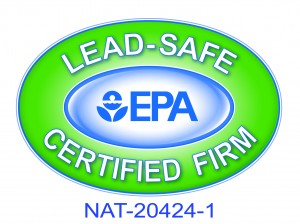Faux painting techniques give you wonderful options to refinish cabinets. What can you do besides just painting your cabinets? First, you have to decide what you do not like about your cabinets. Is it the color of the stain? Many times, people will get tired of the “golden oak” or the “pickled” look of their cabinets, but they like the idea of their cabinets looking like stained wood.
You are not limited by the color of your stained cabinets. Cabinets can be given the look of walnut or mahogany. This can be accomplished without having to strip your existing cabinets. Additionally, you can save at least $10,000-$20,000 in the process.
Our decorative finishers would first apply a coat of transparent bonding primer. Then one or two coats of a stain glaze would be applied to give you the color you desire. Our painters would then apply a coat or two of varnish.
“No, I am tired of the wood look. What are my options?” Painting your cabinets is a fine option. The new waterborne enamels give you a beautiful look, because of their ability to easily level off. The secret is to clean the surfaces well, use a bonding primer and apply a good measure of painting craftsmanship.
If you go the painted route, you have the option to apply a glaze over your cabinets and wiping it off and leaving it in the recesses of the wood for a beautiful expensive look. Our faux painters can produce finishes in an array of colors and styles.
Our faux painting service includes the development of a sample door for your approval before any work is done. After the sample is approved, our job becomes about replicating that sample unto your cabinet surfaces.









 Follow
Follow

